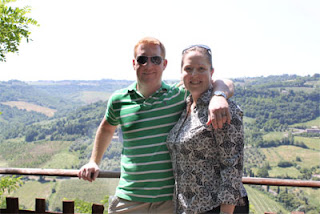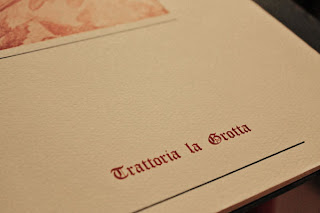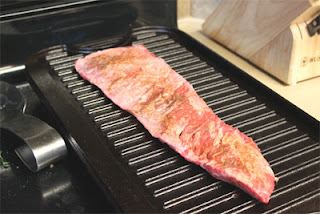Honeymoon, Day 4 in Italy began by boarding a bus and traveling 75 miles north through Umbria and Tuscany. The countryside to Florence was truly picturesque, although I must admit to napping through most of the drive. Our first stop of the day was Orvieto, looming over vine-covered hills from atop a volcanic plateau.
The people who founded Orvieto were drawn to it because of its good defensive possibilities. If I were attacking the town, I too would have turned around after the first 15 minutes of walking up hill. The cliffs rise starkly from the valley below, although once Jim and I reached the top, we found the town to be relatively flat.
In the center of Orvieto is their world-famed cathedral, known for its elaborately adorned facade, rich statuary, marble bas-reliefs and mosaics.
Lucky (or unlucky) for us we arrived on a VERY special holiday for Orvieto, the Feast of Corpus Christi. I was honestly asleep during the explanation of this celebration on the bus. Jim was kind enough to paraphrase for me, and I am going to paraphrase for you.
Way back in the day, a priest was performing communion and was doubting the transubstantiation (the incarnation of Jesus Christ - His body being bread and the blood becoming wine) and when he broke the bread or cracker blood dripped out. Some other crazy stuffed happened, something about the alter being carried out and breaking. I may be completely screwing up the story, but in the end - the people of
Orvieto celebrate the miracle. Every year they reenact the miracle and everyone in the town dresses up and parades around. The festival was quite a site to see. The downside - for us - everyone in the town was in the parade and not a lot of places were open on the day we visited.
The views from the city were breathtaking.
We took a guided tour to explore the honeycombed tunnels and Etruscan caves under the towns cobblestone streets.
Some of these tunnels were VERY tiny and although I'm up for an adventure, my tiny bit of claustrophobia kicked in a little here.
This subterranean city corresponds to the city constructed on the cliff almost three thousand years ago. These tunnels and caves are carved into the "tufa" (lava ash/rock.)
Whheeeeh. Thank goodness we arrived at a spot with a window. I pressed my face up against the iron window guards and took a deep breath of that valley air. Okay, I'm ready to go back under for more exploring.
Jim is loving exploring these tunnels, they have relics and structures that date from the Etruscan, Medieval, and Renaissance periods.
Lunch was on our own in Orvieto. We took our travel guides advice and found Trattoria la Grotta.
Franco Titocchia, the proprietor of La Grotta, is exuberant, confident and proud of how he runs his trattoria, which is regularly visited by the inhabitants of Orvieto, Italian and foreign tourists, and food enthusiasts and experts. His reputation rests on his experience and his trattoria is something of an institution since he's been in the business since 1945.
The antipasti include mixed crostini and bruschetta with Orvieto oil, ham and cured boar. Then you can choose from umbricelli or tagliatelle with duck ragu or all'arrabbiata, tagliolini with artichokes or zucchini, and excellent dishes made with locally grown chickpeas. The chicken in tegame with black olives is just one of many main courses, others being pigeon in salmi, Iamb cutlets, grilled meats, wild boar stew or rabbit in parsley sauce. To end your meal you can choose between the cheese board, which assigns pride of place to local Pecorino, or a selection of home-made desserts: tiramisu, panna cotta, zuppa inglese and tozzetti with Vin Santo.
The wine list features an exhaustive range of Orvieto labels, as well as a good showing from the rest of Umbria and Italy. Although Orvieto is known for it's white wine, Jim and I chose this local Sangiovese to pair with our lunch. It was excellent, as was all the wine we drank in Italy. We loved the vino!
Ravioli al tartufo (truffle)
Tagliatelle with wild boar ragu
Tiramisu
Of course we ended our meal with an espresso. This would not be the first or last espresso of the day.
The trattoria was small and charming. The wait staff was slow to bring the check (even when we asked several times) but this didn't take away from the amazing food we enjoyed here.
We made it to Florence! I can't wait to dive into all the wonderful meals we ate while in Florence. We stayed at the Grand Hotel, a very luxurious hotel with a beautiful lobby and truly grand lounges. The guest rooms have a refined elegance meant to evoke 15th-century Florence, with silks, brocades, frescoes, and real antiques.
I love touring hotel rooms, which is why I took pictures of all the places we stayed while in Italy. This is taken from the front door to our room. As you walk down the hallway the bathroom is on the right.
The large bathroom was beautiful, adorned in two types of Italian marble.
And look at all these amenities! I love it when a hotel has nice bathroom products. Here we have bath salts and bubble bath, and a nail care kit.
Oh! And a gift from the hotel because of our honeymoon. It was a great surprise and a welcome refreshment we enjoyed by the balcony.
Two double doors opened up and Jim and I could enjoy the fresh air and our great view of the Arno River.
Our view from the room.
Our first site to visit in Florence was the Galleria dell' Accademia. This huge building has the form of a Latin-cross church. The side wings and the Galleria dei Prigioni are located in what was formerly the medieval Hospital of San Matteo, while the Tribune was built between 1873 and 1882 to house the statue of David.
We were there to see Michelangelo's majestic sculpture of David. As you walk down the long gallery, David stands at the end. On either side of the gallery hall are Michelangelo's quartet of Prisoners or Slaves. It was absolutely amazing to look at these unfinished sculptures to help put into perspective what it was Michelangelo could do with a piece of marble. Although unfinished, each one was a dramatic representation of their struggle to free themselves from stone. Michelangelo worked on these for 40 years and sadly was never pleased with them.
Cameras were not allowed in the museum, so these pictures are from the Academia's web site. This picture was obviously taken before a madman vandalized David and damaged one of his toes with a sledgehammer. No, I can't see David's toe in this picture, but when we visited the David, there was plexiglass protecting him and surrounding him on all sided.
These pictures do not even do this sculpture justice! I was completely awe struck when I looked at him. David first stood in Piazza della Signoria but was moved to the Accademia in 1873 (a copy now stands in the Piazza as a substitute) and placed beneath the rotunda of a room built exclusively for its display. Michelangelo began working on David when he was just 29. We debated if this sculpture depicts David just before he went to face Goliath or if the sculpture depicts the moments after Goliaths defeat.
Seeing David was one of my favorite moments of our trip. I could have stood there for hours admiring his beauty and contemplating what Michelangelo gave to us, and the meaning of it all. By the way, I believe Michelangelo sculpted David in the moments before he went to face his opponent Goliath.
Dinner this evening was provided at the Grand's contemporary fine dining restaurant, InCanto.
I was particularly impressed with how creative each dish was prepared and presented. I didn't make notes on the menu, but I did take a picture of all our food.
The open kitchen offers diners a glimpse of Tuscan born, internationally trained Chef Fabrizio Innocenti as he flawlessly fuses contemporary European cuisine.
The hotel was brilliant at night. After dinner Jim and walked down the Arno to find an after dinner drink.
The original Harry's Bar is in Venice, but this chain has popped up all over Europe and can even be found in the US. The bar was made famous by Hemmingway back in the early 1950's.
Jim and I ended Day four in Florence with two Limoncello, sitting outside Harry's Bar on the bank of the Arno.




.jpg)

.jpg)
.jpg)
.jpg)

.jpg)
.jpg)
.jpg)
.jpg)







.jpg)

.jpg)
.jpg)
.jpg)
.jpg)
.jpg)

.jpg)













.jpg)
.jpg)
.jpg)
.jpg)



.jpg)

.jpg)
.jpg)
.jpg)

.jpg)